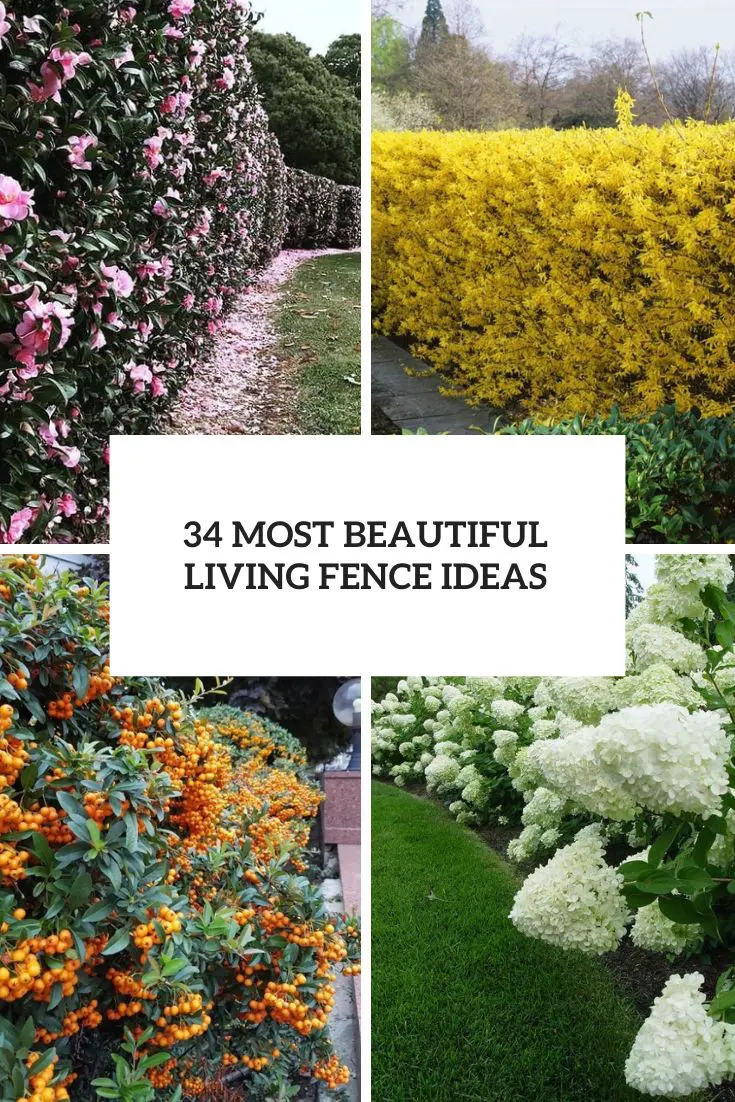Building A Sustainable Living Fence: Eco-Friendly Options

Table of Contents
Choosing the Right Plants for Your Sustainable Living Fence
Selecting the right plants is crucial for a successful and sustainable living fence. Consider these factors for optimal growth and minimal environmental impact:
Native Plant Species
Using native plants offers numerous advantages for your sustainable living fence. They are naturally adapted to your local climate, requiring less water and maintenance than non-native species. This reduces your water consumption and the need for chemical fertilizers, contributing to a healthier environment. Native plants also support local ecosystems by providing food and habitat for pollinators and other wildlife.
- Examples of Native Shrubs: Check your local botanical garden or native plant society website for a comprehensive list. For example, in many North American regions, Viburnum, Spirea, and Potentilla species are excellent choices.
- Examples of Native Vines: Consider Clematis, Passionflower, or native honeysuckle varieties (depending on your region and climate).
- Examples of Native Trees suitable for screening: Smaller trees like Serviceberry or Hawthorn can work well, though you need to consider long-term growth and required space.
Remember to consider the mature height and spread of your chosen plants. Proper spacing is essential to prevent overcrowding and ensure each plant receives adequate sunlight and nutrients for healthy growth. Consult local resources for mature size information.
Fast-Growing vs. Slow-Growing Options
The choice between fast-growing and slow-growing plants involves a trade-off. Fast-growing species provide quicker privacy, but may require more frequent maintenance and have shorter lifespans. Slow-growing plants offer long-term durability and require less frequent pruning but take longer to establish a dense screen.
- Fast-Growing Options: Examples include some varieties of bamboo (ensure it's a clumping variety to prevent invasiveness), willow, and certain climbing vines. Be aware of potential increased maintenance.
- Slow-Growing Options: Consider evergreen shrubs like Holly or Boxwood, which provide year-round screening but establish more slowly. Though more expensive up front, the long-term sustainability might be worth it.
Choosing the right growth rate depends on your priorities. Fast-growing options may be better for quick privacy needs, while slow-growing varieties are more suitable for long-term sustainability and minimal intervention.
Considering Soil Conditions and Sunlight
Understanding your soil type and sunlight exposure is paramount for plant success. Improper selection can lead to plant failure and wasted resources. Conduct a soil test to determine its pH and composition (clay, sandy, loam).
- Plants for Clay Soil: Look for plants tolerant of poorly drained soil, such as Hydrangea or certain types of Viburnum.
- Plants for Sandy Soil: Sandy soils tend to dry out quickly, so choose drought-tolerant plants such as Lavender or Rosemary.
- Plants for Full Sun: Many flowering shrubs and vines thrive in full sun, but ensure they also receive adequate watering.
- Plants for Partial Shade: Hostas and ferns are suitable options for areas with less direct sunlight.
Conducting a soil test helps you select plants with the appropriate nutrient needs, preventing nutrient deficiencies and maximizing plant growth. Choose plants appropriate to your soil type and sun exposure for a healthy, sustainable living fence.
Construction Techniques for an Eco-Friendly Living Fence
Building your living fence sustainably involves mindful material selection and construction techniques:
Sustainable Fencing Materials
Avoid using materials with high embodied carbon emissions. Opt for recycled or sustainably sourced materials whenever possible:
- Recycled Materials: Consider using recycled plastic or metal posts, or repurposing old pallets for a unique rustic look (ensure they are treated wood-free).
- Bamboo: Bamboo is a fast-growing, renewable resource, making it an excellent eco-friendly fencing material. Choose treated bamboo for increased durability.
- Sustainably Harvested Wood: If using wood, ensure it is certified by the Forest Stewardship Council (FSC) to guarantee responsible forestry practices.
Remember to factor in the durability, cost, and environmental impact of each material when making your choice. Source your materials responsibly to minimize your environmental footprint.
Building the Structure
Proper construction is essential for supporting your living fence and ensuring plant health:
- Minimize Waste: Plan your project carefully to minimize material waste. Reuse or recycle leftover materials whenever possible.
- Recycled or Repurposed Materials: Incorporate recycled materials such as reclaimed wood or metal into your fence structure.
- Proper Spacing and Support: Provide adequate spacing between plants and sturdy support (posts, wires, or trellises) to allow for growth and prevent the fence from collapsing. The support structure should be designed to withstand the mature size of the chosen plants.
Careful construction ensures that your living fence thrives and provides a long-lasting, sustainable solution.
Maintaining Your Sustainable Living Fence
Ongoing maintenance is essential for a healthy and beautiful living fence:
Watering and Fertilizing
Efficient watering and fertilization promote healthy plant growth without excessive resource consumption:
- Water-Wise Irrigation: Use drip irrigation or soaker hoses to deliver water directly to the plant roots, minimizing water waste.
- Rain Barrels: Collect rainwater to supplement your irrigation needs and reduce reliance on municipal water.
- Organic Fertilizers: Use compost, manure, or other organic fertilizers to nourish your plants without harmful chemical inputs. Organic fertilizers improve soil health while reducing environmental impact compared to synthetic fertilizers.
Proper watering and fertilization contribute to a thriving living fence and a healthy ecosystem.
Pruning and Trimming
Regular pruning maintains the shape, health, and density of your living fence:
- Seasonal Pruning: Prune your plants at the appropriate time of year to encourage healthy growth and flowering (research individual plant species for pruning times).
- Pruning Guidelines: Follow specific pruning guidelines for different plant types to avoid damaging the plants.
- Removing Dead or Damaged Branches: Regularly remove dead or damaged branches to improve air circulation and prevent disease.
Correct pruning contributes to a thriving fence and prevents problems before they become serious.
Pest and Disease Management
Address pests and diseases without resorting to harmful chemical pesticides:
- Companion Planting: Plant certain species together to deter pests (research companion planting techniques for your selected plants).
- Beneficial Insects: Introduce beneficial insects such as ladybugs or lacewings to control pest populations naturally.
- Natural Pest Control Methods: Use natural pest control methods such as neem oil or insecticidal soap to manage pest infestations. Always identify pests before applying any treatment.
Early identification and eco-friendly management of pests and diseases are crucial for a healthy and sustainable living fence.
Conclusion
Building a sustainable living fence offers a beautiful, eco-friendly alternative to traditional fencing. By carefully selecting native plants, using sustainable materials, and employing responsible maintenance practices, you can create a thriving living fence that enhances your property and benefits the environment. Remember to consider your specific climate, soil conditions, and sunlight exposure when choosing plants. Start planning your own eco-friendly living fence today! Learn more about sustainable landscaping and other eco-conscious gardening techniques to make your yard a haven for both beauty and biodiversity.

Featured Posts
-
 Harvard Faces Potential Loss Of All Federal Funding Under Trump Administration
May 29, 2025
Harvard Faces Potential Loss Of All Federal Funding Under Trump Administration
May 29, 2025 -
 Harry Potter Remake A Deep Dive Into The Snape And Mc Gonagall Dynamic And Its Film Fidelity
May 29, 2025
Harry Potter Remake A Deep Dive Into The Snape And Mc Gonagall Dynamic And Its Film Fidelity
May 29, 2025 -
 Latin Musics Future The Leading Role Of Women By 2025
May 29, 2025
Latin Musics Future The Leading Role Of Women By 2025
May 29, 2025 -
 Vallat Steps Down Remy Cointreau Names Marilly As Successor
May 29, 2025
Vallat Steps Down Remy Cointreau Names Marilly As Successor
May 29, 2025 -
 Boj Governor Ueda On Rising Long Term Yields And Potential Risks
May 29, 2025
Boj Governor Ueda On Rising Long Term Yields And Potential Risks
May 29, 2025
